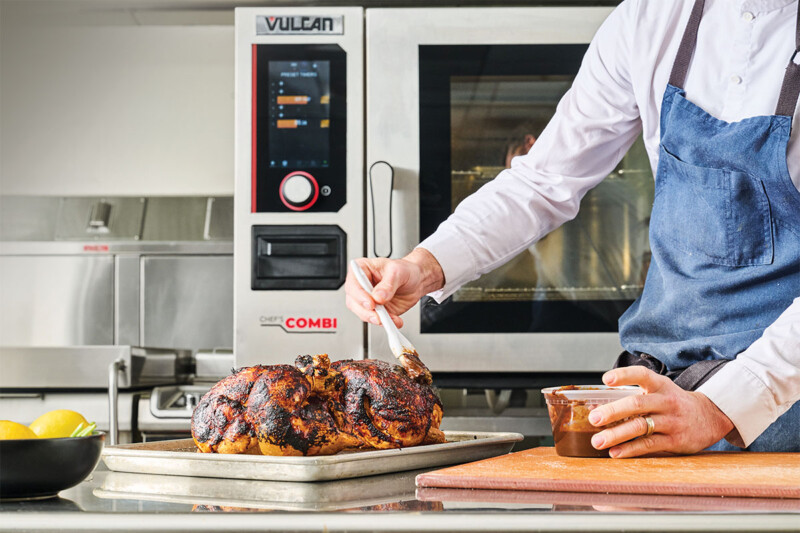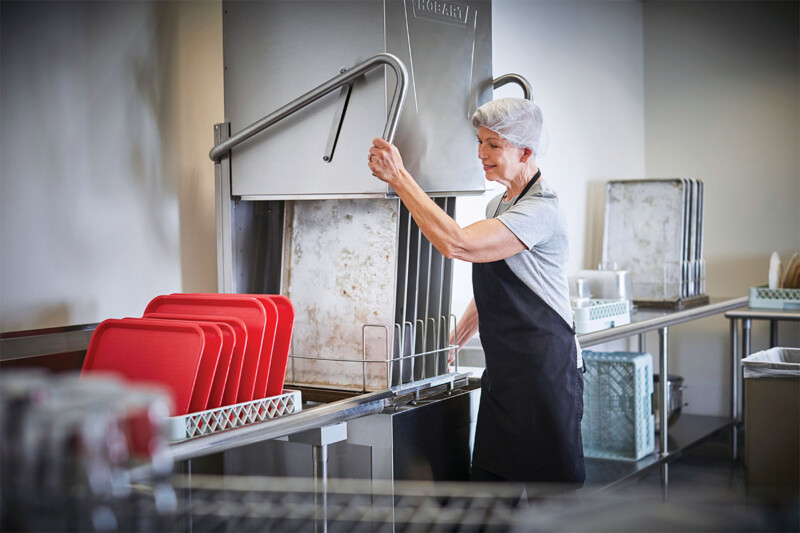Hints to Power Your Induction Cooktop Hunt
With updated controls and intuitive technologies, newer induction models answer calls for cooking cues, ease of use and more.
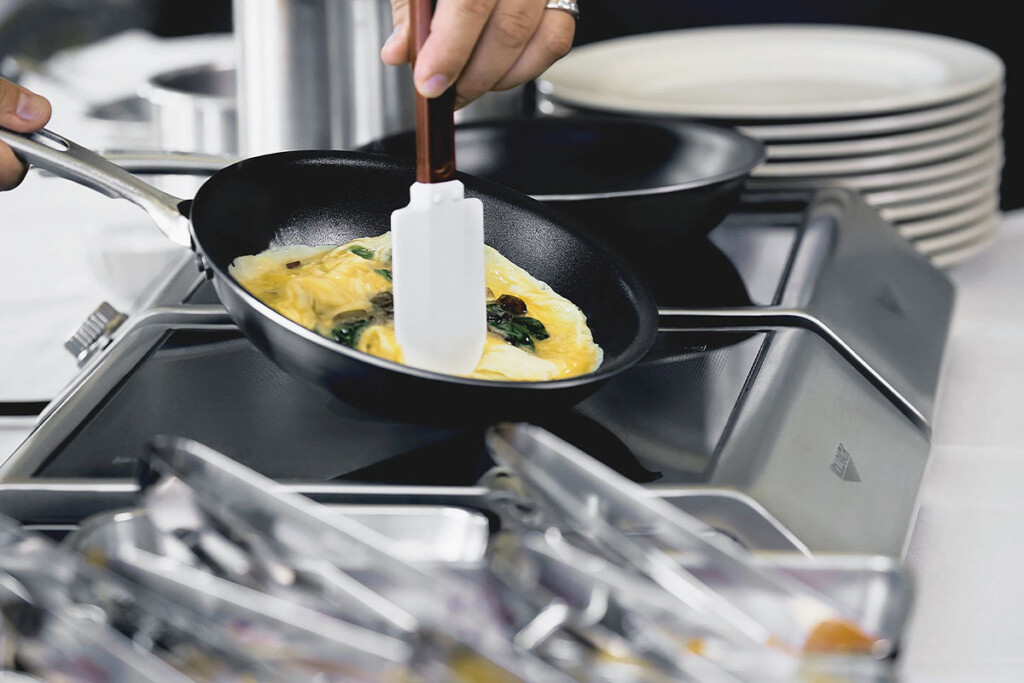
The flexibility and portability of induction cooktops has made this equipment popular in the front-of-house, where it gives staff the ability to create made-to-order food right in front of customers. But new features and technologies have made this equipment just as relevant in back-of-house setups. With user-friendly interfaces and improved cooking features, applications for induction cooktops continue to grow.
Programming Capabilities
As on many other equipment lines, touch screen control panels are now offered on some induction cooktops. This upgrade brings advantages, especially when it comes to the ongoing challenges many operators still face with labor issues, like recruiting skilled staff. According to one manufacturer, the addition of touch screen controls brought its induction cooktops in line with its other cookline equipment. “The updated controls took our induction line to the next level as far as design, giving the equipment a more sleek look,” they say. For kitchen staff already used to pushing a button to cook on a combi oven or fryer, the updated controls help simplify training and use.
Digital controls also allow cooks to fine-tune the heat for different cooking techniques, and also program in both time and temperature to make recipes with the touch of a button. One line of induction cooktops has the option to program recipes with the multipoint cook-and-hold controls on the touch screen, giving operators the ability to set up to three different time and temperature settings. Another line has built in a USB port for operators to upload recipe instructions straight to the cooktop. The ability to program takes away the guesswork in cooking and allows each operator to produce consistent results, from one shift to the next or one location to another, no matter who is cooking that day.
Enhanced Cooking Features
One of the complaints from some cooks when it comes to induction is that it doesn’t have the look and feel of cooking over gas. Because induction uses an electromagnetic energy to create heat within the pan, there is no flame. For cooks used to this visual cue, one manufacturer’s induction cooktops feature LED lighting that gets brighter as the heat increases.
Induction cooking also requires a connection between the pan and the cooktop, to transfer the energy to the pan and cook the food. This makes some cooks worry that induction takes away some of the theatrics of cooking, such as flipping an omelet or crepe. However, a technology called automatic pan recovery allows employees to tilt and lift cookware atop induction cooktops without the cooktop turning off once the pan leaves the surface. Sensors recognize as pans are tilted or even completely lifted from the cooking surface, and then immediately recover to the set cook temperature once the cookware lies flush again.
One of the newest features to bring a traditional look and feel of cooking to induction is the griddle overlay introduced by one manufacturer. This equipment fits seamlessly over a 5,000-watt, double-hob induction range. “Operators wanted the flexibility to cook a larger amount of product, and this griddle creates a larger space for more output,” says the manufacturer. From a whole carton of eggs to 18 4-ounce burgers, operators can get more food out quickly without the need for special cookware.
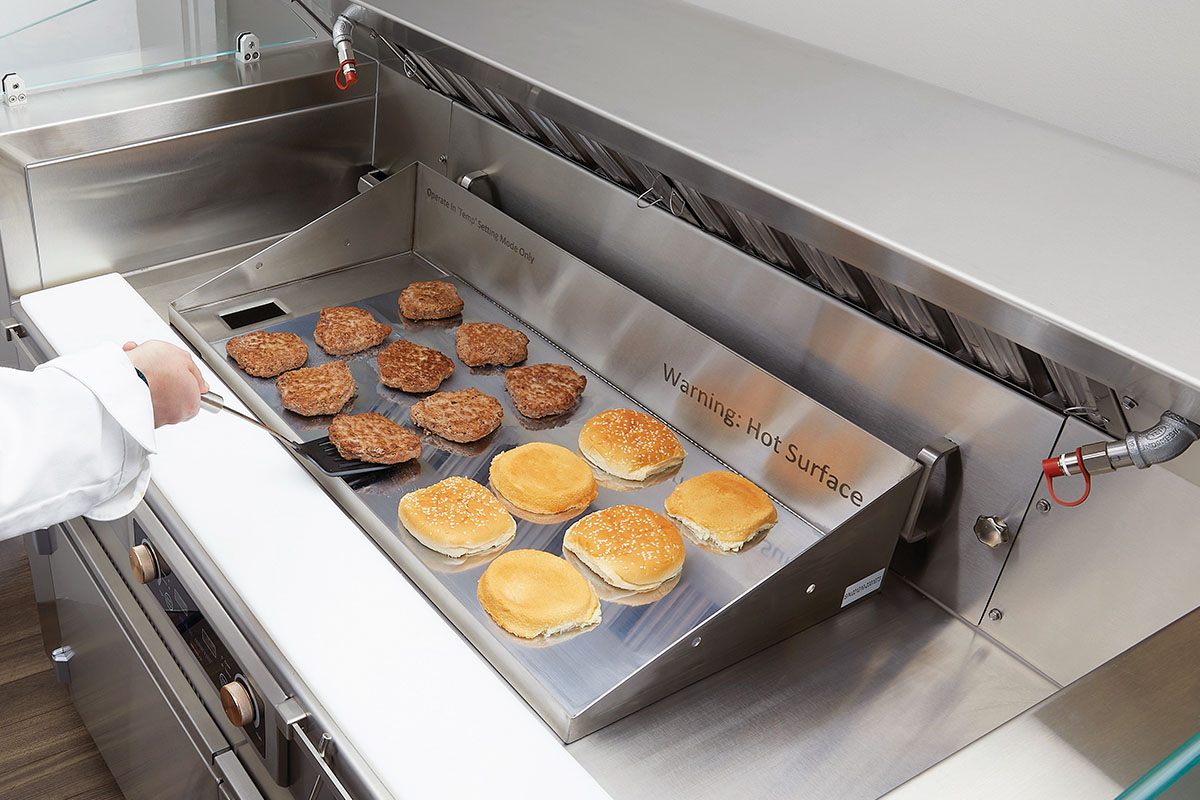
One maker’s removable induction griddle overlay unit adds cooking flexibility atop two induction burners. Courtesy of Spring USA.
Advanced Energy Control
Induction cooktops are well-known for their energy-saving features. Creating heat within the pan rather than with an open flame cuts down drastically on the amount of heat lost to the environment during cooking. Most manufacturers report around 50% less energy loss from induction, as compared to gas. This not only makes the cooking process more efficient, but also improves the work environment of the kitchen and reduces the load on the HVAC system.
The electromagnetic cooking technology isn’t the only way induction cooktops help conserve and manage energy use. Other such features, available on select models, include the following:
Pan-size sensors. These built-in sensors automatically adjust to the type and size of a pan, to produce the exact amount of energy necessary with less waste.
Input limiting software. While most induction cooktops require a 50-amp power source, one line includes software that allows you to use a 30-amp circuit. The software works to manage the power of the two-hob unit.
Automatic shutoff. This feature turns the cooktop off after two minutes of inactivity.
In or Out?
When it comes to induction cooktop formats, operators have three choices: countertop models, built-ins or full-size, range-style units. The decision on which to choose comes down to the type of cooking and desired flexibility.
Countertop models can be moved to different spots within the kitchen, to improve efficiency in the cookline. For operations where stations are a part of food production, countertop induction cooktops are a good choice. They can be switched out from one day to the next, depending on the day’s menu items. Countertop cooktops also are easier to service if anything goes out of order because everything is accessible. There’s no need to go through a counter to access the interior parts of the cooktop.
A built-in induction cooktop, meanwhile, provides a level work area from the prep table to the cooking surface, which can be better ergonomically. This option works best for cook stations that won’t be moved or used for other types of cooking applications. You could choose to install an induction range, or take a drop-in induction cooktop and integrate it into customized cabinetry. Whether using an induction cooktop on the counter or having it built into a workstation, you need to remember to consider cord placement. Some operators choose to have it lay on the counter, while others will drill a hole through the counter or workstation at the electric source.
Induction ranges have many of the same benefits as built-in cooktops. However, they come in four- and six-hob options, which makes them a better choice for large operations. “Corporate dining services that are cooking for a lot of people throughout the day, and are often in office buildings with regulations about gas use, will have induction ranges built in,” says one manufacturer.
Other considerations include:
Energy Star designation. In the fall of 2023, the EPA introduced Energy Star specifications for electric cooktops. Moving forward, manufacturers will be able to differentiate some induction products with Energy Star certification.
Number of hobs. Cooktops come with a choice of one or two hobs, or four or six hobs. The number of hobs needed will be determined by the type of cooking and how much volume an operation has. However, a suggestion for operators needing two hobs is to purchase two single-hob units. That way, if one hob malfunctions for any reason, the other remains available. Some four-hob units have two separate circuits, each servicing two hobs, for that same reason.
Hood placement. Just because you’re cooking with electricity doesn’t mean you don’t need to think about exhaust. Operations using induction to cook proteins and fatty foods will still be putting grease and other particulates into the air. Make sure you have the appropriate hood space where you choose to use a cooktop.
Manual controls versus touch screen. Many units come with the ability to choose either type of control. Some employees like the feel of turning a knob, whereas touch screens are more user-friendly for less skilled workers, as well as easier to clean.
Power source. Make sure to look at the specs of the induction unit, and ensure you have the power needed or that you can install the bigger line, if not currently available.
Speed. Cooktops range from 1,400 to 5,000 watts; as you level up, you gain speed of cooking.
Space. Induction burners have built-in airflow, but it’s also important to make sure there’s plenty of clearance surrounding the cooktop to keep air moving freely around the entire unit.
From precision in cooking to improved energy efficiency, induction cooktops can be a valuable addition to any kitchen. Whether designing a new kitchen or upgrading an existing operation, the newer features and upgraded technologies help these product lines bring even more flexibility to foodservice operations.
Get the Feel
While not as familiar as gas cooking to some, newer induction cooktops’ controls and features aim to ease the transition.
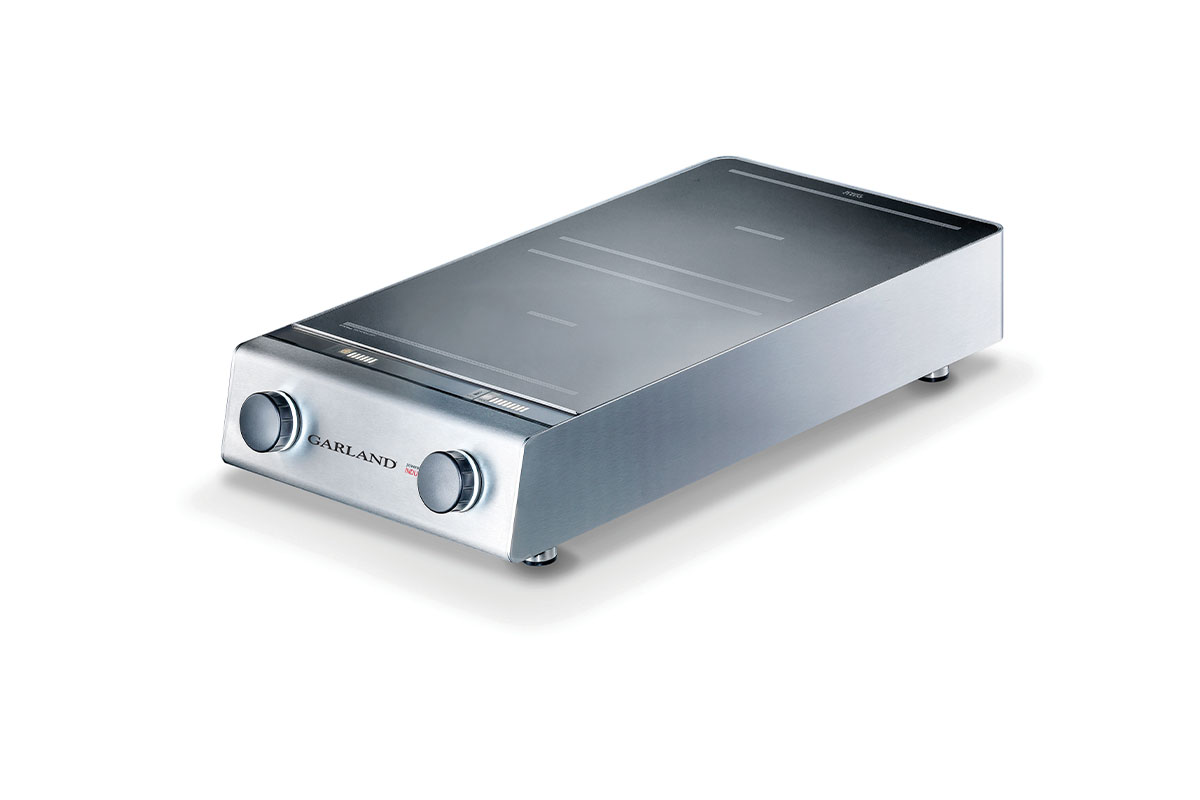
Garland
Model: Instinct Hob 10
Controls: Knobs with top-mounted LED display, 12 power levels and a timer function
Details: Multiple temperature checkpoints protect against overheating. Cook or hold, with settings from 77°F-212°F on this 5,000W unit, which adjusts to available power. Automatic shutoff and automatic pan detection are included.
Website: garland-group.com
Editor’s note: All featured models have been released or updated since May 2020.
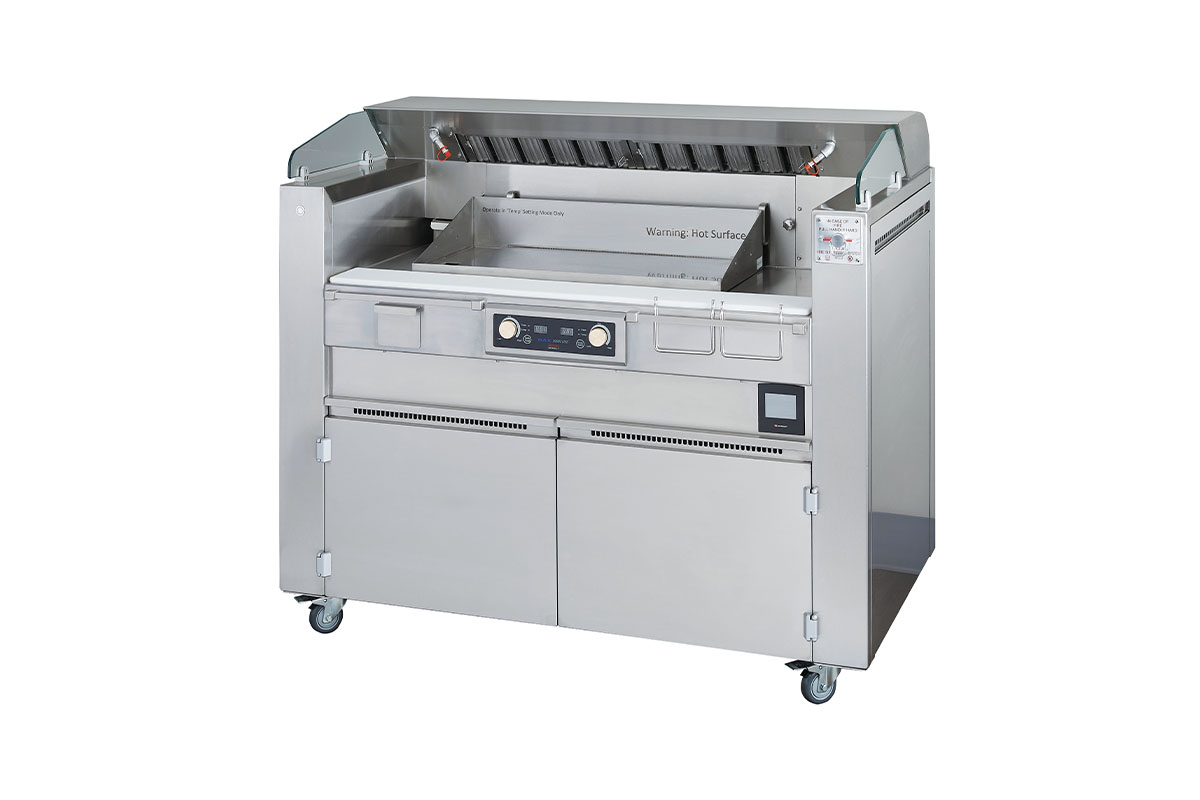
Spring USA
Model: Double MAX induction range
Controls: Knob with 20 cook mode levels, temperature from 100°F-400°F and a digital LED display
Details: Automatic pan recovery and pan recognition add ease of use on this two-hob unit (2,500W each), shown with the maker’s removable griddle overlay attachment atop a mobile cooking station. In June, the maker announced its MAX induction line had earned Energy Star certification.
Website: springusa.com
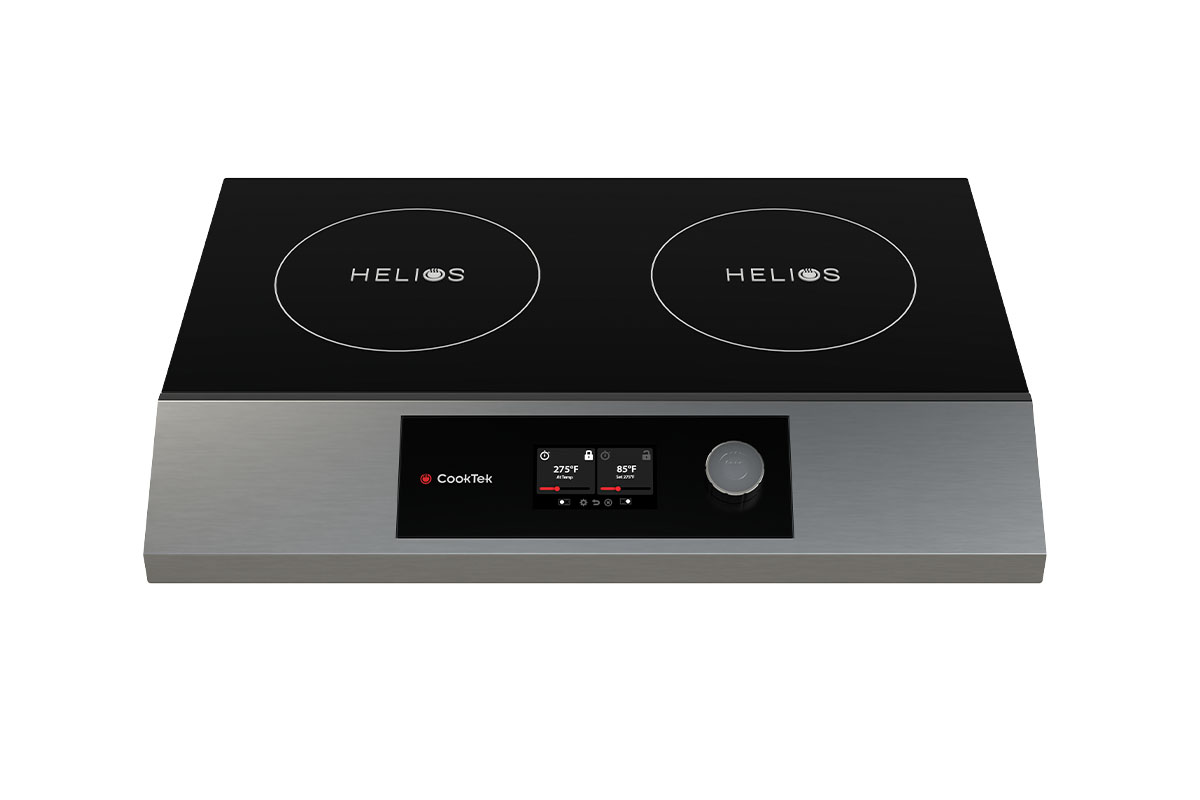
CookTek
Model: Helios side-to-side double hob
Controls: 4-3/10-in. touch display with temperature display options, plus knob
Details: Adjust between 85°F-425°F. Automatic pan detection and automatic shutoff keep heat in check. Choose from 2,500 or 3,500W per hob, as well as side-to-side or front-to-back setups.
Website: cooktek.com
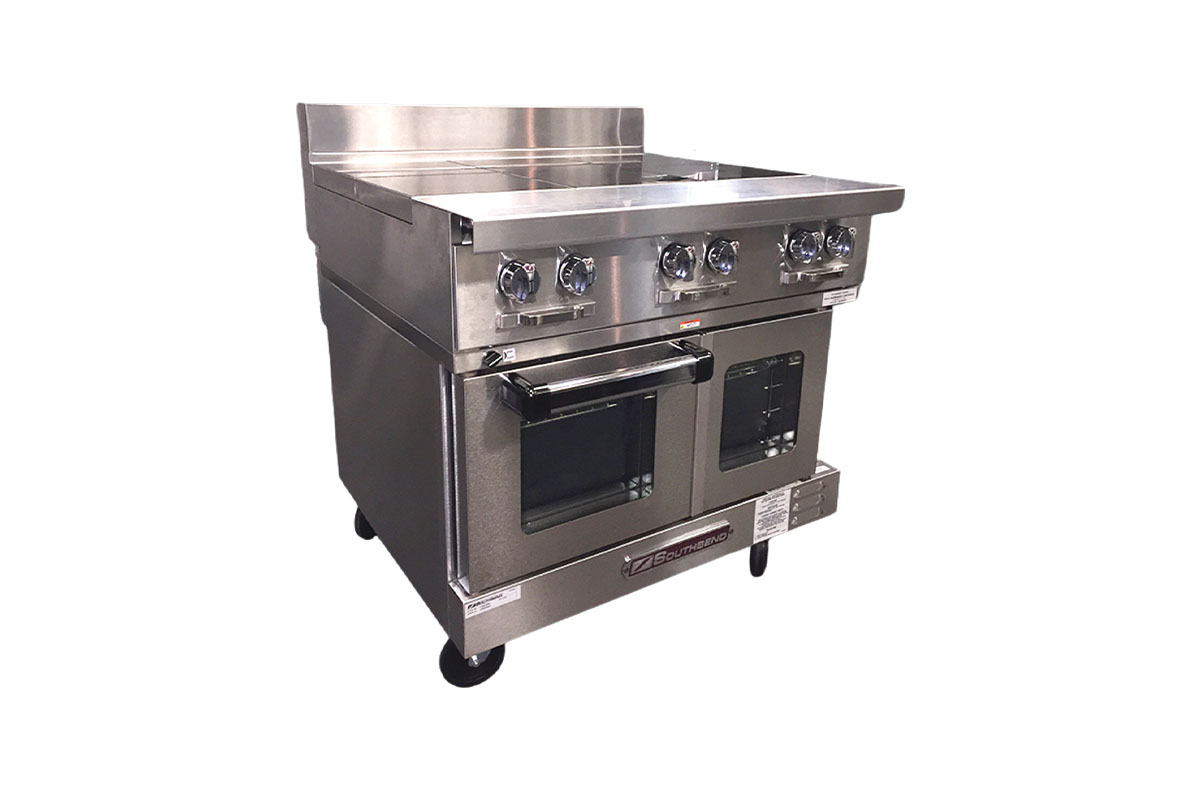
Southbend
Model: 36-in.W sectional range, Platinum Series
Controls: Six knobs with 0-9 power level and LED indicator
Details: Six 3,500W burners make up this unit, which can be put atop a stainless cabinet, oven or mounted on a countertop. Automatic shutoff prevents overheating.
Website: southbendnc.com
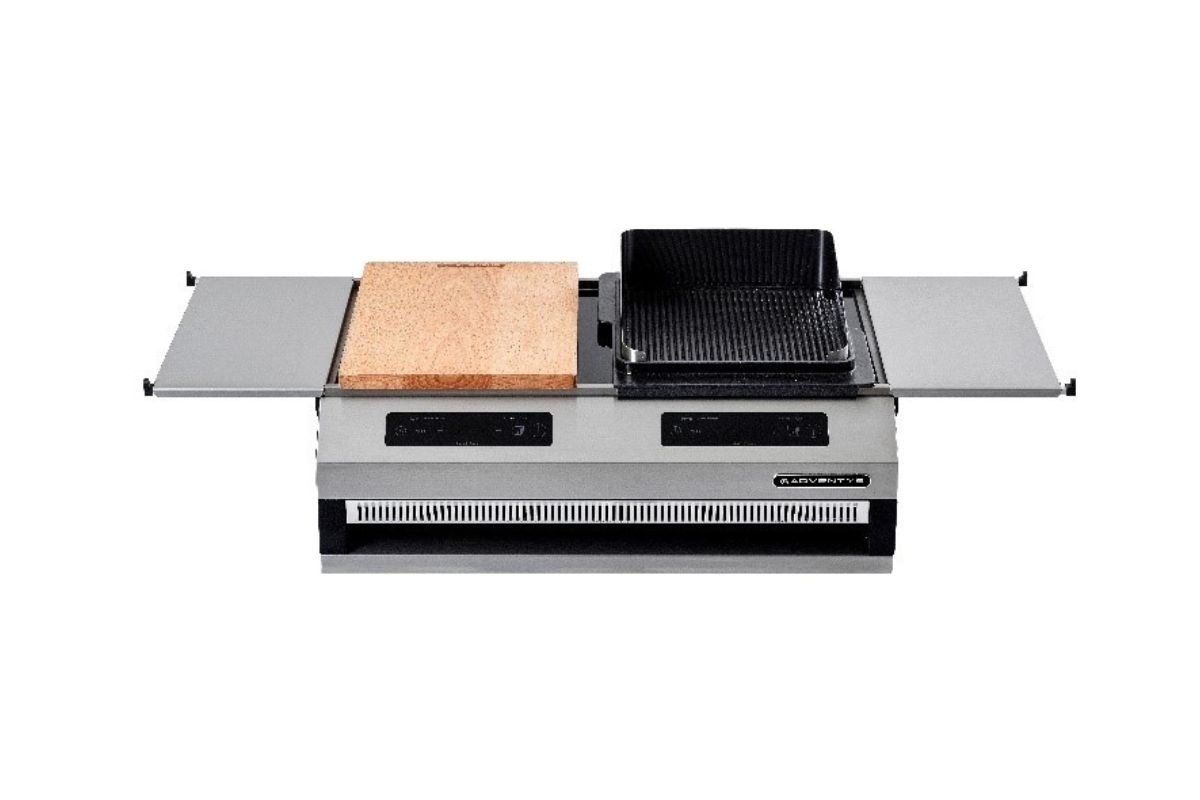
Equipex
Model: Octopus
Controls: Touch, with power or temperature settings
Details: This countertop unit comes with a removable grooved grill and flat plancha cast iron plates, plus two removable side shelves, a cutting board, tongs and a stainless spatula. The 3,400W two-zone station has a 3,000W-per-burner maximum.
Website: equipex.com
RELATED CONTENT
- Advertisement -
- Advertisement -
- Advertisement -
TRENDING NOW
- Advertisement -
- Advertisement -
- Advertisement -

